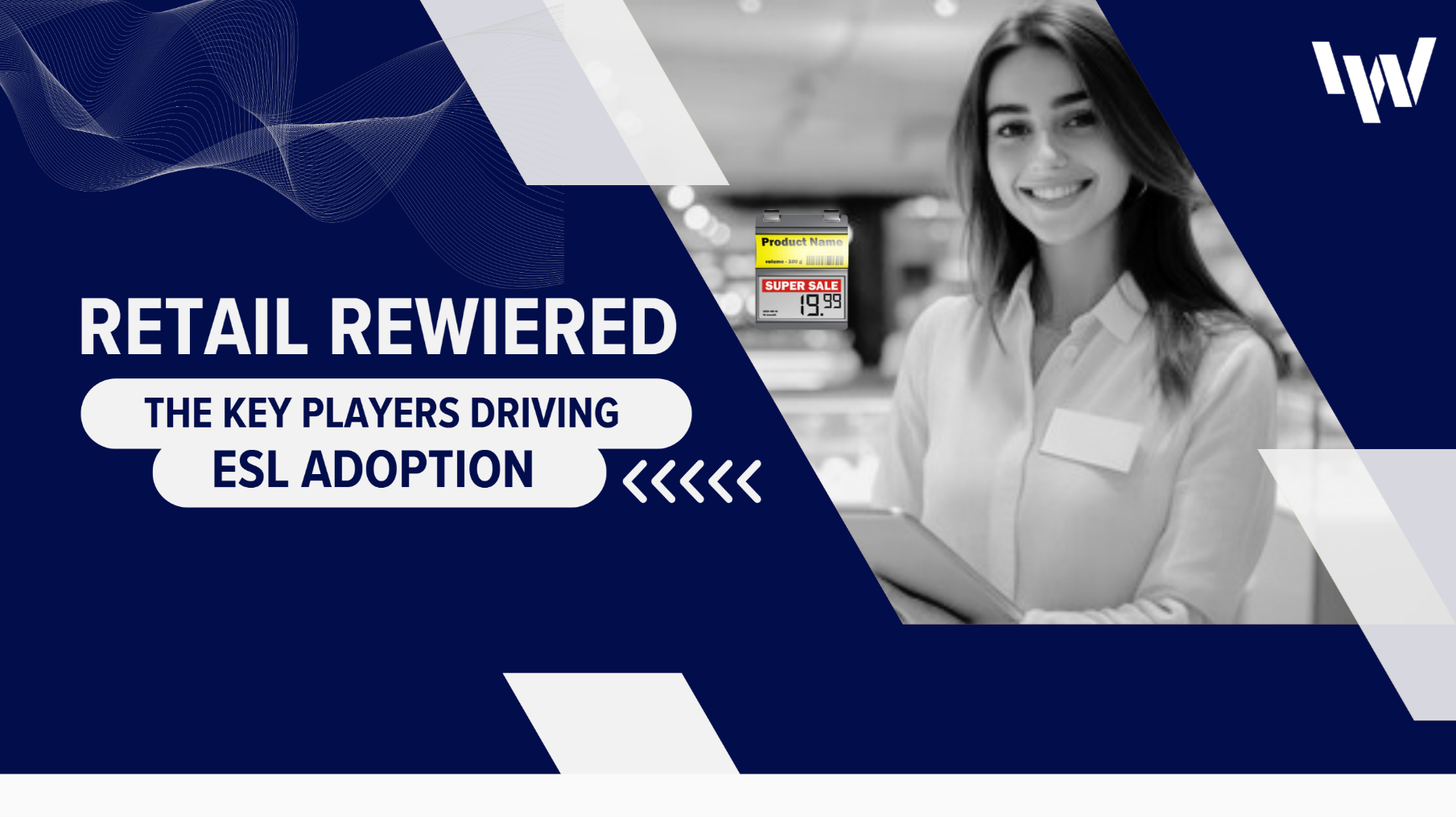Top ESL Companies Driving Retail Transformation
Top ESL companies in retail are redefining the in-store experience through digital shelf technology. The retail industry is evolving quickly. Rising labor costs, shifting customer expectations, and pressure for real-time agility are fueling demand. As a result, Electronic Shelf Labels (ESLs) have become a cornerstone of operational transformation.
In this post, we break down the top ESL companies in retail that are leading the charge in digital shelf innovation.
Market Snapshot: ESLs on a Steep Growth Trajectory
The global ESL market is poised to expand at a compound annual growth rate (CAGR) of 15.8% from 2024 to 2030, according to Grand View Research. Major chains like Walmart are adopting ESLs across thousands of stores, aiming to optimize real-time pricing strategies, reduce waste, and improve in-store operational visibility.
This growth isn’t just about tech for tech’s sake—it’s about giving retailers a smarter, leaner, and more responsive way to manage inventory and engage customers at the shelf.
Top ESL Companies Driving Retail Innovation
1. Pricer Pricer is known for robust e-paper display technology. They deliver scalable ESL systems in real time—serving grocery, DIY, and more.
2. Vusion (SES-imagotag) The SES-imagotag platform turns shelves into connected digital touchpoints. These can display prices, product reviews, inventory alerts, and promotions in real time.
3. Displaydata
With a focus on aesthetics and visibility, Displaydata’s high-resolution ESLs are popular in visually sensitive verticals like fashion and consumer electronics. Their solutions support brand consistency and immersive in-store experiences.
4. GROUPE ATLANTIC
Offering simple, intuitive ESL systems, GROUPE ATLANTIC focuses on affordability and operational control. Their systems appeal to retailers looking to automate without overhauling their entire infrastructure.
Why the ESL Market Is Booming
Several forces are driving the retail industry’s growing appetite for ESL adoption:
• Operational Automation: Retailers are replacing manual, labor-intensive processes with smart automation, particularly in pricing and inventory workflows.
• Customer Experience: ESLs enable accurate, real-time information at the shelf—reducing confusion, increasing price trust, and enhancing the overall shopping experience.
• Sustainability Goals: Paper label production and waste are costly and increasingly unpopular. ESLs drastically reduce this footprint, aligning with green initiatives.
• Advancing Tech: Improvements in display quality, battery life, and wireless connectivity have made ESLs more affordable and flexible than ever.
Challenges on the Path to Adoption
Despite their clear benefits, ESL systems come with a few key challenges:
• Upfront Investment: For small to mid-sized retailers, the initial capital expenditure on hardware, software, and infrastructure can be a barrier.
• System Integration: ESLs must integrate with retail tech stacks like POS, ERP, and inventory systems. This often requires careful planning and customization.
• Change Management: Adopting ESLs means training store associates and educating customers. Retailers need to manage this transition carefully to realize full ROI.
Closing Thoughts: ESLs as a Strategic Investment in Retail’s Future
Retailers evaluating ESL solutions should view this technology not as a short-term fix, but as a long-term strategic lever. Providers like Pricer, Vusion, Displaydata, and GROUPE ATLANTIC are helping reshape what’s possible at the store level—combining real-time agility with data-driven insight.
If you’re evaluating ESLs, look beyond the hardware. Imagine a shelf that communicates instantly. One that adapts to change in real time and enhances the full customer journey.
Curious about the actual financial impact of ESLs in your environment? Explore the ROI of Electronic Shelf Labels in our companion guide to see how these systems improve efficiency, reduce labor costs, and deliver long-term value.
Or let our team at IW run the numbers for you. With nearly 50 years at the forefront of retail technology, we help retailers cut through the noise and focus on what works.
Let’s Talk
P.S. At IW Technologies, we’ve been trusted by industry leaders across grocery, pharmacy, QSR, distribution, and more. We’re not just watching the retail future take shape—we’re helping build it.

